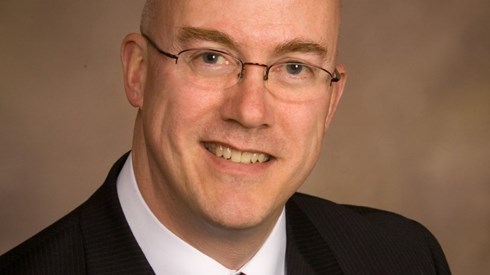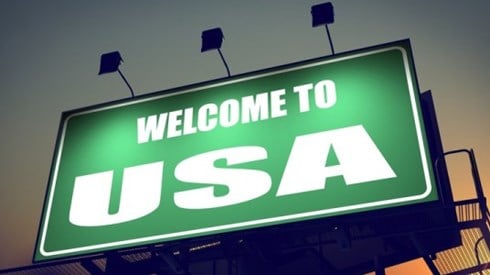Captives No Longer the Alternative Market, Says Vermont's David Provost

July 24, 2019

David Provost joined the Captive Insurance Division of the Vermont Department of Insurance in Montpelier as an examiner in 2001 when Vermont already was, by far, with nearly 400 captives and close to $5 billion in annual captive premium volume, the largest captive domicile in the United States and the world's third largest.
That growth has continued. In 2018, Vermont had a whopping 580 active captives and well over $22 billion in premium volume. In an interview with Captive.com, Mr. Provost, who holds the position of deputy commissioner of captive insurance, discusses some of the reasons for that growth, as well as a wide array of captive insurance company issues.
Only a few years after the passage of legislation in 1981 by Vermont lawmakers allowing captive insurance companies to be set up in the state, Vermont became the largest captive domicile in the United States, a position it still holds. What are some of the reasons for Vermont's tremendous growth as a captive domicile?
First, there were a little luck and timing involved and a whole lot of hard work. The luck and timing were that we passed our law when there were only a few other states with captive statutes and they were not particularly interested in pursuing the business or providing a good domicile home.
There was good timing as the market turned very hard not long after the legislation passed. Then, there was a whole lot of hard work with the managers and the VCIA (Vermont Captive Insurance Association) and the regulators all working together in a very cautious approach to doing this. We only licensed one captive in the first year and three in the second. We didn't start out with 100 captives. We started out slow. But we were a small state with a big vision.
That was not the only time Vermont lawmakers got involved in captive legislation. Lawmakers have updated the statute many times. What have been some of the most significant legislative changes made to the statute in the last few years?
We have a little something every year. So, in 2016, we added the dormancy option. We had a lot of captives that were not doing anything, and we asked, "Do you really need your captive here?" A lot of captive owners said, "We are not doing anything now, but we still see the value so we want to keep it." So, we created the dormancy option. That year, we also added risk retention group governance standards. That was a National Association of Insurance Commissioners (NAIC) requirement.
How about new captive requirements during the last couple of years?
In 2017, we added agency captives (captives that are owned by insurance agencies or brokerages), which is something we never had before. Last year, we added affiliated reinsurance company captives for traditional companies to replicate their Bermuda captives or offshore captives onshore. This year, we changed the investment rules for a lot of captives, which was very well received. We had a fairly long prescriptive investment statute that was hard to follow and almost guaranteed a mediocre result. So we changed it so that it was OK to follow the old statute. But if you want to give us a different plan, go ahead, and if we are OK with it, we will approve it.
Vermont has attracted many captives from other domiciles. How many captives have redomiciled, and why did their parents move their captives to Vermont?
Exactly 88 captives have moved from other domiciles. And to be fair, 56 have moved out. This is a two-way street. The reasons for moving are pretty much the same for both directions. A lot of times, it is consolidation. Whenever you read about a merger and an acquisition of a Fortune 1000 company, you can pretty much guarantee that both those companies have a captive. If we are lucky, both those companies have captives in Vermont, but we still lose one. But sometimes, they have a captive in Vermont, one in Bermuda, and maybe somewhere else. So, if they consolidate and it works out, the captives are consolidated in Vermont and we get a movement into Vermont that way. Other companies move their captives here for the stability we have here. Vermont is known as a long-term domicile. We are not going anywhere. We don't change with political winds. It is a big deal that Vermont has remained a solid, stable captive domicile.
Do you expect that shift from other domiciles to continue?
I think it will continue. It hasn't slowed down at all. Now that there are more captives, there are more opportunities. In just the last 5 years, captives have been more active than most years. So, we had 11 captives move here in 2015. Six moved here last year. But it goes both ways. We had nine captives move out in 2017 to a variety of domiciles including Bermuda and the Caymans.
Captive formations have slowed in many domiciles, including Vermont. What accounts for that slowdown?
There are a few reasons. We have a soft market. That may be changing. But it has been a soft market for a long time. To some extent, the captive world is somewhat saturated. If you don't have a captive yet, you might be too small to have a captive, or it may not be right for you, or it is not what you have chosen to do. From everything I read, if you are a Fortune 1000 or Fortune 500 company, you already probably have a captive. Plus, there are only so many companies that are that big where a captive makes sense.
How have the risks taken on through Vermont captives changed over the years?
It still is fairly basic property-casualty business. We always have said that the exciting stuff is what happens at the parent level. The captives are pretty plain vanilla. Most of our captives still write workers comp, general liability, auto, property, and professional liability. But we have seen a lot of changes in terms of employee benefits and cyber liability. As the world changes, the insurance market changes. But that is not what drives the business. What drives the business is big-dollar workers comp and general liability. Still, other things are being added on, such as medical stop-loss and surety coverages.
Today, there are just over 200 risk retention groups (RRGs). How many are in Vermont, and does Vermont have more RRGs than any other state?
We do. As of December 31, 2017—the 2018 numbers are still rolling in—we had 81 of the 224 risk retention groups, which is 36 percent of RRGs. In addition, Vermont RRGs have written 61 percent of the total RRG premiums. That number has been pretty steady for quite a few years. Basically, a third of RRGs are in Vermont, writing two-thirds of the premium. And we have half of the largest RRGs. We like them. We enjoy working with them. We keep the costs as low as we can. We do our work. And we work with the RRGs to make sure they operate well. Other states are happy that an RRG is based in Vermont. They are comfortable with our regulation. It sort of becomes a self-feeding machine.
What do you see as future captive growth?
We have several charts that show Vermont is pretty much at a plateau. We are adding captives, but captives are dissolving and merging. We have been just shy of 600 captives for a decade. That might stay the same. It may stay that way for a long time unless the environment changes. By the environment, I mean a really hard market or some sort of change that shocks the system a bit.
What has been your craziest day in the insurance world?
Probably my craziest day was when I was doing a presentation for Business Insurance in New York. That was at the height of the bedbug problem in New York, and I had bedbugs in my room. I wound up in the presidential suite. They took all my clothes and washed them. I was going from New York to New Orleans for an NAIC meeting. So, they shipped my clothing. I went to New Orleans with the clothes on my back. They shipped the clothes down to me. So, it was quite an adventure.
What have been some of the biggest surprises in the captive insurance industry?
What has surprised me is how many family-owned companies are so huge. These are not mom-and-pop stores, but they are owned by "Mom and Pop." Mom and Pop come here and show up for their board meeting or for their introductory meeting with us. They have a national size company, which is quite literally owned by Mom and Pop. They are both here, and they both are still running the show, and their name is on the label, and they are very involved in their companies. It was stunning for me to see how big some of these companies are and how many privately owned companies there are out there of a size that you wouldn't think are privately held.
What are some of the threats and opportunities the captive industry faces over the next 5 years?
I'm not sure how many threats there are. There are a lot of costs that are being added on. I'm not sure if the self-procurement taxes are a threat. At one point, I thought they were. But it is just another cost to doing business and something you have to consider when choosing your domicile and choosing how you structure your program. But that does not affect everybody. I don't think regulation is a threat. I think regulation has to work with companies and be at the appropriate level for captives.
Do you see the captive regulatory landscape changing during that same time period?
Not a whole lot. The regulatory environment moves pretty slowly. You can't do anything without either going through the legislation process or the regulation promulgation process, which, depending on which state you are in, are very different routines. It is much easier for me to go to the legislature. Other states say it is much easier for them to pass a regulation and then they don't have to go through the legislature. The process varies from state to state. But it still takes time to do things.
Have captives become mainstream?
They certainly are no longer the alternative market. Vermont alone averages $20 billion to $30 billion in captive premiums a year. Worldwide, there are hundreds of billions of dollars in premiums going through captives. Most every brand-name company has a captive. So, captives are a big part of the insurance environment.
Mr. Provost is pictured above. (Courtesy photo.)
David Provost is a Certified Financial Examiner with over 25 years of experience in the captive insurance industry, including client advisory services, accounting, systems management, program development, marketing, formation, licensing (from both sides of the table), and regulation. He has been with the State of Vermont since 2001 as an examiner and most recently as assistant chief examiner.
Mr. Provost's collective experience includes captive insurance regulation, management, and sales and marketing. He is experienced in all phases of the examination process with companies of all types and sizes. He has evaluated captive applications for admission and licensure and monitored companies for solvency and compliance. He can be reached via email.
July 24, 2019


